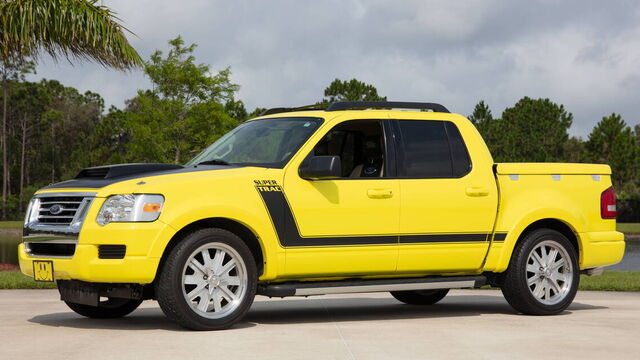Pickup trucks are often praised for their rugged capability, durability, and ability to go the distance—both on the job and on the odometer. But not all trucks are created equal.
Some pickups become legends for lasting half a million miles or more with proper care, while others struggle to cross the 100,000-mile mark before suffering costly breakdowns.
That’s the reality of the used truck market: while body-on-frame strength may be shared across the board, what’s under the hood—and how it’s put together—makes a massive difference.
In this comparison, we take a deep dive into two extremes of the pickup spectrum. First, we spotlight five trucks that routinely reach 500,000 miles, often with their original engines and transmissions still running strong.
These models have proven themselves in real-world conditions—construction sites, farms, long-haul drives—and won the loyalty of owners through unmatched longevity.
Then, we shift gears to explore five pickups that tend to wear out far earlier than expected. Whether due to poor powertrain reliability, fragile electronics, or shoddy build quality, these trucks often leave their owners stranded before reaching six figures on the odometer. If you’re buying used or planning long-term ownership, this list can be a game-changer.
Also Read: 5 Vehicles That Rarely Overheat and 5 That Constantly Do
5 Pickup Trucks That Reach 500K
When it comes to sheer mechanical resilience, certain pickup trucks have earned a reputation for outlasting even their owners. These are the models you’ll find hauling trailers at 300,000 miles, plowing through snow at 400,000, and still going strong past the 500,000-mile mark.
It’s not just anecdotal—fleet owners, commercial drivers, and brand-loyal enthusiasts repeatedly report insane longevity from specific trucks, especially when maintenance is consistent.
But what makes a pickup truck capable of reaching half a million miles? First, it’s the powertrain.
Durable engines like the Cummins inline-six or Toyota’s bulletproof V8s can keep spinning seemingly forever if treated right. Second, the transmission—automatic or manual—must be tough enough to handle years of stress without catastrophic failure.
Third, the supporting systems (cooling, electrical, suspension) must be engineered with longevity in mind, not just cost savings. Finally, it comes down to reputation. Trucks that reach this milestone typically earn cult-like followings because they deliver where others falter.
We’ve combed through reliability data, real-world owner testimonials, and high-mileage records to find five trucks that genuinely last.
Whether you’re looking for your next long-term investment or just want to know which nameplates are worth betting on, these picks have proven they’re not afraid of the long haul.
1. Toyota Tundra (2007–2021)
When talking about long-lasting pickup trucks, the Toyota Tundra from the 2007 to 2021 model years is a legend in its own right.
Built with classic Toyota overengineering, this second-generation Tundra delivers the kind of durability that owners count on for the long haul—literally.
It’s powered primarily by the 5.7-liter i-Force V8, an engine so stout and under-stressed that it often goes half a million miles without major internal issues.
Backed by a bulletproof 6-speed automatic transmission and a heavy-duty drivetrain, the Tundra doesn’t rely on fancy gimmicks to get the job done—it just works, year after year.
One major reason for its longevity is its simplicity. While rival pickups chase luxury trends and pile on electronics, the Tundra sticks to old-school fundamentals. The frame is solid, the suspension is stout, and the electronics are minimal and less prone to failure.
Owners who follow a basic maintenance schedule—regular oil changes, cooling system checks, and transmission fluid swaps—can realistically expect these trucks to outlive several newer competitors.
Tundras also benefit from excellent corrosion resistance. Whether you’re driving in snow belt states or desert climates, these trucks resist rust surprisingly well, especially when compared to some American rivals.
That means the underbody, frame, and suspension components stay healthier longer, helping owners avoid costly rust-related repairs that could otherwise take a truck off the road prematurely.
Another strength of the Tundra is its resale value and community support. There’s a strong following for these trucks, which means parts availability remains high, and online forums are full of DIY guides. Mechanics often recommend Tundras for people who want minimal hassle over 15–20 years of ownership.
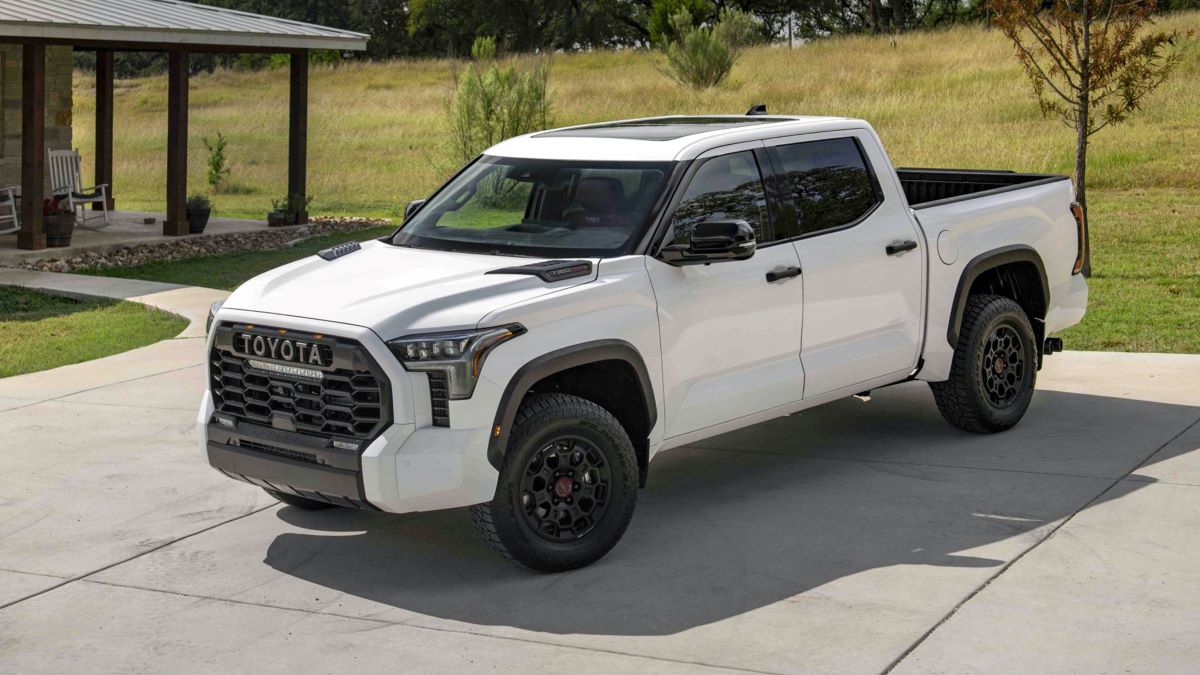
There are drawbacks—fuel economy is poor, and the ride quality is a bit stiff by today’s standards—but for buyers focused on dependability over frills, the Tundra stands tall.
It may not have adaptive suspensions or fancy touchscreen tech, but it will likely still be running long after trendier trucks have been scrapped.
In a world where many vehicles struggle to reach 150,000 miles without major repairs, the Toyota Tundra proves that with smart engineering and diligent maintenance, a half-million-mile pickup is more than just a myth—it’s a reality.
2. Ford F-250 Super Duty (2000–2007, 6.0L Diesel Excluded)
When properly equipped and maintained, the Ford F-250 Super Duty from the early 2000s has earned a reputation as a true workhorse capable of reaching—and even exceeding—500,000 miles.
However, there’s one important caveat: skip the troubled 6.0-liter Power Stroke diesel and opt for either the legendary 7.3-liter Power Stroke diesel or the tried-and-true V10 Triton gas engine. These versions are the ones that truly deliver on longevity.
The 7.3L Power Stroke, available until 2003, is a cult favorite among diesel enthusiasts. It’s known for its robust construction, simple fuel injection system (compared to later diesels), and tolerance for heavy-duty workloads.
Many owners report towing large trailers, hauling heavy loads, and driving across state lines for decades without catastrophic failure. It’s not the fastest or cleanest diesel engine, but it’s among the most indestructible.
Meanwhile, the 6.8L Triton V10, though less famous, has proven itself a reliable gas alternative, especially in fleet service and commercial use. It’s not uncommon to see these trucks used in municipal service or utility fleets for decades, with many surpassing 300K, 400K, or even 500K miles.
Another strength of this generation F-250 is its chassis. Built on Ford’s heavy-duty platform, these trucks were designed with serious towing, plowing, and hauling in mind.
The frame, axles, and suspension are engineered to handle punishment—far more so than light-duty pickups. This rugged construction helps the truck hold together mechanically and structurally long after others have begun to fall apart.
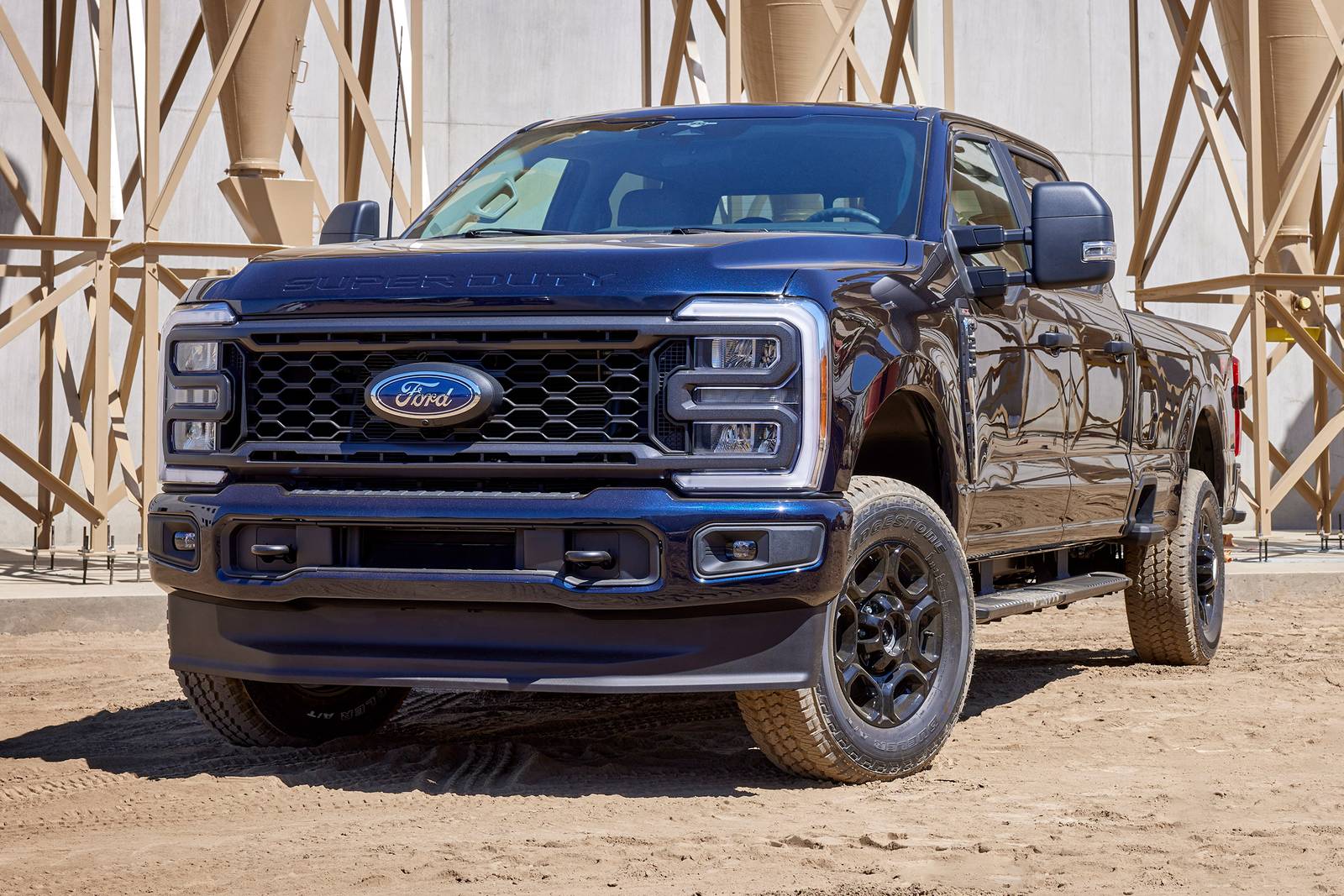
Interior quality in these years is utilitarian but tough. Controls are simple, seats are built to last, and most components are easy to replace. Parts availability is another major plus; thanks to its popularity, everything from sensors to body panels is widely available and reasonably priced.
Yes, fuel economy is unimpressive, and the ride quality can be stiff. But if your goal is endurance, not luxury, few trucks from this era can match the high-mileage potential of a well-kept F-250 Super Duty with the right engine.
With the right powertrain and regular maintenance, this truck won’t just outlast others—it’ll keep getting back to work without complaint, mile after mile.
3. Chevrolet Silverado 2500HD (2001–2007, Duramax Diesel)
The 2001–2007 Chevrolet Silverado 2500HD equipped with the 6.6-liter Duramax diesel engine is one of the most respected heavy-duty pickups for long-term reliability.
Specifically, models with the LB7 (2001–2004) and LLY (2004.5–2007) engine codes are known for their impressive ability to surpass 500,000 miles—particularly when paired with the Allison 1000 transmission. This pairing of a rock-solid powerplant with a world-class gearbox is at the heart of the Silverado HD’s long lifespan.
The Duramax LB7 engine was GM’s first real answer to Ford’s Power Stroke and Ram’s Cummins. It came out of the gate strong, delivering not only plenty of power and torque, but also surprising longevity.
With a forged-steel crankshaft, a cast-iron block, and conservative tuning, the LB7 is capable of running for half a million miles when properly maintained.
Even the injectors—known as a weak point—can be replaced without tearing down the engine, making long-term ownership manageable.
What elevates the Silverado 2500HD even further is the inclusion of the Allison 1000 transmission. Designed for commercial-duty service, this 5-speed automatic gearbox is widely regarded as one of the most durable ever installed in a pickup.
Its ability to handle torque, dissipate heat, and shift predictably under heavy load contributes to the truck’s legendary reliability.
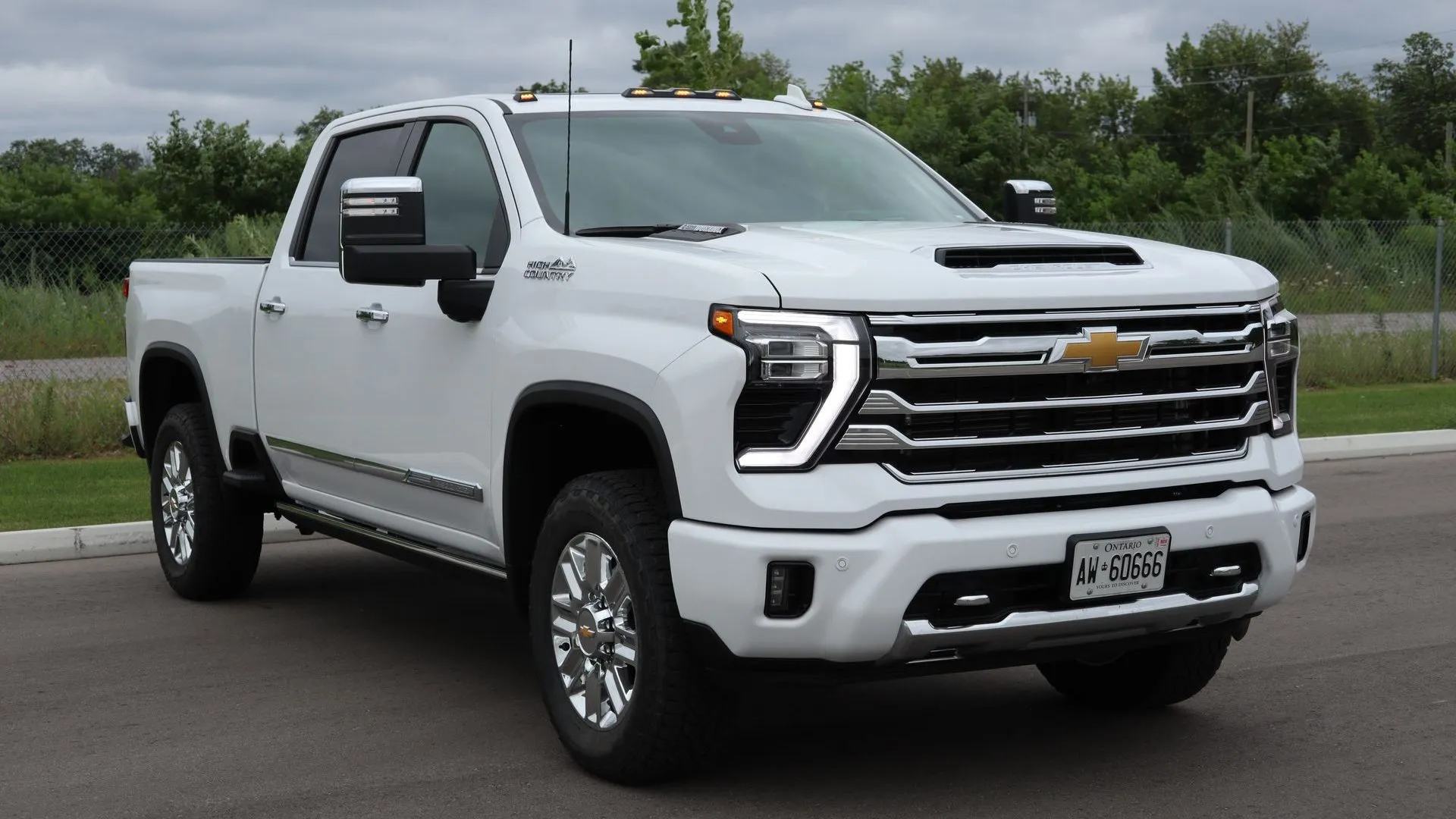
The HD chassis is equally impressive. The frame is reinforced, the axles are heavy-duty, and suspension components are made for hard use—whether that’s plowing snow, pulling a fifth-wheel trailer, or hauling construction materials every day. These trucks were born to work and keep working.
Interior quality in these years is nothing fancy, but the layout is functional and parts are plentiful. Owners who rack up hundreds of thousands of miles often keep their trucks running on a mix of aftermarket support and GM’s massive parts network.
While rust can be an issue in Northern climates, and fuel economy is only modest, the Silverado 2500HD Duramax remains a legend for those who value long-haul durability. When properly cared for, it’s not just capable of reaching 500K—it’s often expected.
4. Ram 2500/3500 (1994–1998, 5.9L 12-Valve Cummins Diesel)
Ask any diesel enthusiast about legendary engines, and the 5.9L 12-valve Cummins in the 1994–1998 Ram 2500 and 3500 pickups will come up almost immediately. These trucks are often referred to as the holy grail of diesel longevity, and for good reason.
With proper maintenance, it’s not just common—it’s expected—that they’ll hit 500,000 miles, and many examples easily push beyond 700K or even a million with rebuilds and care.
The heart of this longevity lies in the engine itself. The 5.9L 12-valve Cummins is a straight-six diesel that operates on a mechanical injection system, meaning it’s free from the complexities and failures that plague later electronic systems.
Its inline layout is naturally balanced, and the engine block is built like a tank—cast iron with forged internals designed for industrial-grade durability.
These Rams were offered in both 2500 and 3500 formats, with either manual or automatic transmissions.
The manual, particularly the NV4500 5-speed, is especially prized for its robustness. Combined with the low-RPM torque of the Cummins, these trucks are ideal for towing, hauling, and prolonged high-mileage use.
While the powertrain is nearly bulletproof, the rest of the truck is relatively simple, which is a benefit for long-term reliability.
The interiors are barebones by today’s standards, but fewer electronics mean fewer things to break. Many owners praise these trucks for their mechanical honesty—they’re not fancy, but they’re incredibly dependable.
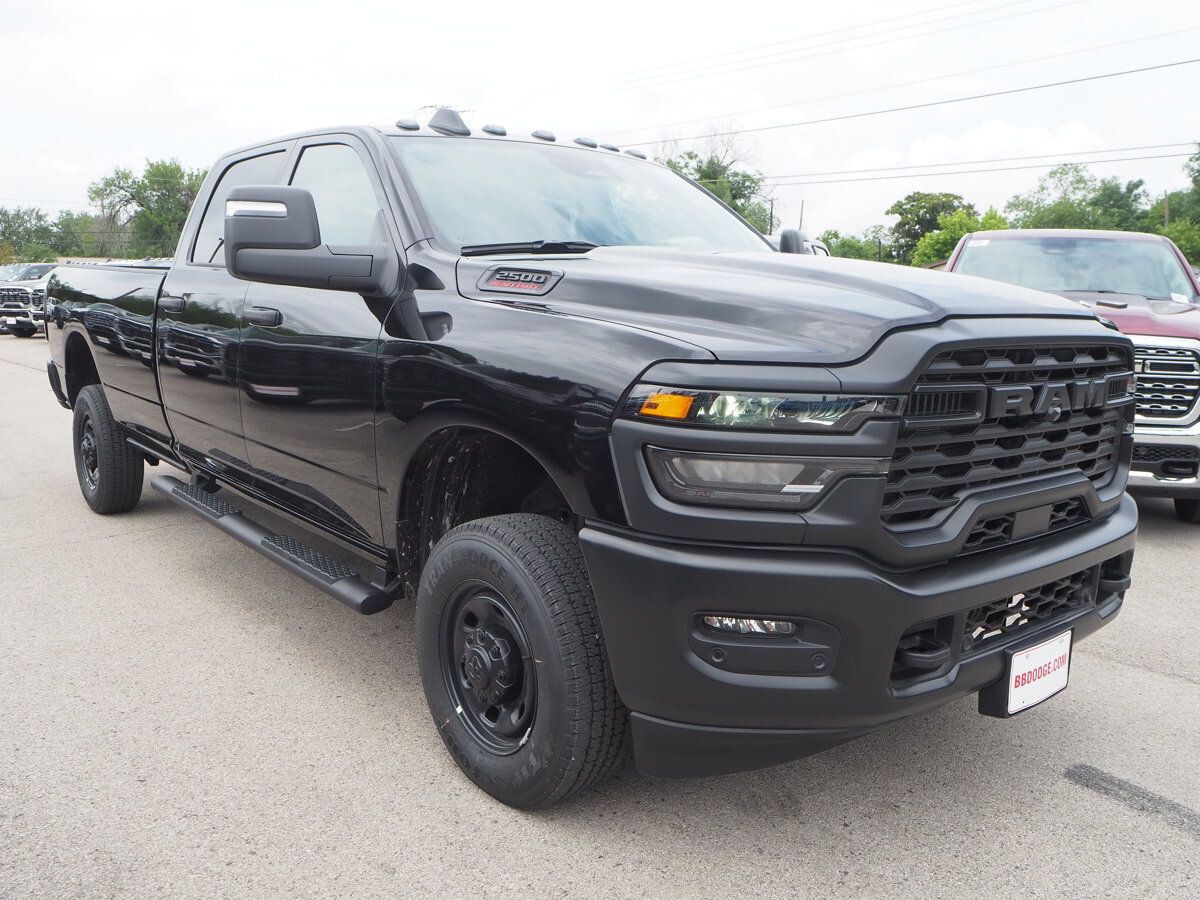
Of course, the Achilles’ heel of these models is the body. Rust is a major issue, especially in areas with salted roads. Frame and floor pan corrosion can retire these trucks long before the engine gives out, so undercoating and rust prevention are essential for long-term survival.
Despite the dated styling and lack of modern comforts, the 12-valve Cummins Ram remains a gold standard for long-haul reliability. It’s become a collector’s item in the diesel community, with well-maintained examples commanding a premium price—even with 300,000+ miles on the clock.
If your priority is a truck that will work hard and last a lifetime, the 1994–1998 Ram Cummins is about as close to mechanical immortality as a pickup can get.
5. Honda Ridgeline (2006–2014)
It might come as a surprise, but the first-generation Honda Ridgeline (2006–2014) deserves a solid place on the list of long-lasting pickup trucks.
While it doesn’t fit the traditional image of a body-on-frame bruiser with a massive V8, the Ridgeline proves that reliability isn’t just about brute strength—it’s also about smart engineering, consistent build quality, and balanced performance.
Numerous owners have reported reaching 300,000 to 500,000 miles with their original engines and transmissions, and fleet usage in municipalities and delivery services backs up these claims.
The Ridgeline’s secret lies in its Honda roots. It’s built more like an SUV than a traditional truck, sharing a unibody platform with the Pilot and Odyssey. That might turn off purists, but it actually contributes to its reliability.
The 3.5-liter V6 engine is one of Honda’s most trusted powerplants, known for smooth performance, low maintenance requirements, and exceptional durability.
Paired with a well-tuned automatic transmission and Honda’s Real Time AWD system, the drivetrain is simple, efficient, and surprisingly robust over time.
What truly helps the Ridgeline last is its engineering restraint. Honda doesn’t overcomplicate things.
The interior is functional and built with high-quality materials that hold up over time. Electronics are straightforward and far less glitch-prone than those found in full-size trucks loaded with features.
And because the Ridgeline isn’t trying to tow 13,000 pounds or conquer rock trails, its components experience less wear and tear, meaning fewer costly repairs down the line.
Rust protection is also impressive, and the truck’s unibody construction offers fewer crevices where corrosion typically takes hold. Owners in rust-prone states report far less frame decay than seen in many traditional pickups.

Fuel economy is better than average for a pickup, and the Ridgeline offers a smooth, car-like ride that makes long commutes easier on the driver and the truck alike.
Downsides? It doesn’t tow like a heavy-duty, and payload capacity is more modest—but for people who use their truck for commuting, light-duty hauling, and occasional adventures, the Ridgeline is a mileage monster.
In the long-run, it’s not just about power—longevity comes from precision and balance. And that’s where the Ridgeline quietly excels.
5 Pickup Trucks That Rarely Cross 100K
Not every pickup truck is built to go the distance. While some gain reputations for lasting hundreds of thousands of miles, others have a far less flattering legacy. These are the pickups that start strong but stumble well before the 100,000-mile mark.
Whether it’s due to weak transmissions, fragile engines, persistent electrical problems, or corrosion issues, these trucks often become repair shop regulars far too early in their lifespans.
For buyers, this can be a costly mistake. Many shoppers assume all pickups are inherently durable, especially when they carry big names or look tough on the outside.
But underneath the rugged marketing, there are models with serious flaws that lead to early retirements—and often, regretful owners.
Poor build quality, design shortcuts, and under-tested components all play a role in trucks that wear out long before their time.
In this section, we highlight five pickups that have consistently disappointed when it comes to long-term reliability.
Some of them launched with great fanfare, only to develop reputations for breakdowns, recalls, and mechanical failures. Others were simply outclassed by rivals that offered better engineering and quality control.
This isn’t just about a few bad reviews—these trucks have repeatedly shown up in reliability studies, consumer complaints, and resale data as models that struggle to survive even a modest lifespan.
If you’re considering one of these pickups on the used market, proceed with caution. Many of them can be owned affordably for a short period—but you’ll likely pay the price in repairs, downtime, or even early engine death.
Understanding which trucks are prone to early failure can save you thousands and spare you the headache. These next five pickups may look good in the classifieds, but their track records suggest they’re best left behind.
1. Dodge Dakota (2000–2004, 4.7L V8)
The Dodge Dakota once filled a unique niche in the pickup world as a mid-size truck with optional V8 power.
But in the early 2000s, especially models equipped with the 4.7-liter Magnum V8, it gained a notorious reputation for mechanical failure long before reaching 100,000 miles.
Though it offered decent towing numbers and rugged looks, the Dakota’s reliability issues quickly became too loud to ignore.
At the heart of the problem is the 4.7L V8, which was prone to serious internal engine issues, including sludge buildup, timing chain failures, and head gasket leaks.
In many cases, owners who followed manufacturer service schedules still experienced early engine death. Adding to that, cooling system problems often led to overheating, further accelerating engine wear.
Transmission trouble was another frequent headache. The automatic gearboxes paired with the 4.7L often shifted poorly, failed early, or required expensive rebuilds before reaching six figures on the odometer.
Combine that with often spotty electrical systems—random dash light failures, flaky sensors, and unreliable power accessories—and the Dakota quickly became known as a gamble on the used market.
Rust is another major issue, especially in northern climates. Frame rot, especially around the rear leaf spring mounts and fuel tank straps, can render the truck unsafe.
Owners in salt-heavy regions frequently reported frame perforation well before 100K, often forcing early retirement even if the engine and transmission were somehow still functioning.
To make matters worse, Dodge’s overall quality control during this period was inconsistent. Interior materials wore out quickly, and trim pieces often fell apart or broke under normal use. Dealer service experiences were frequently frustrating, with repeat visits and unresolved issues becoming the norm.
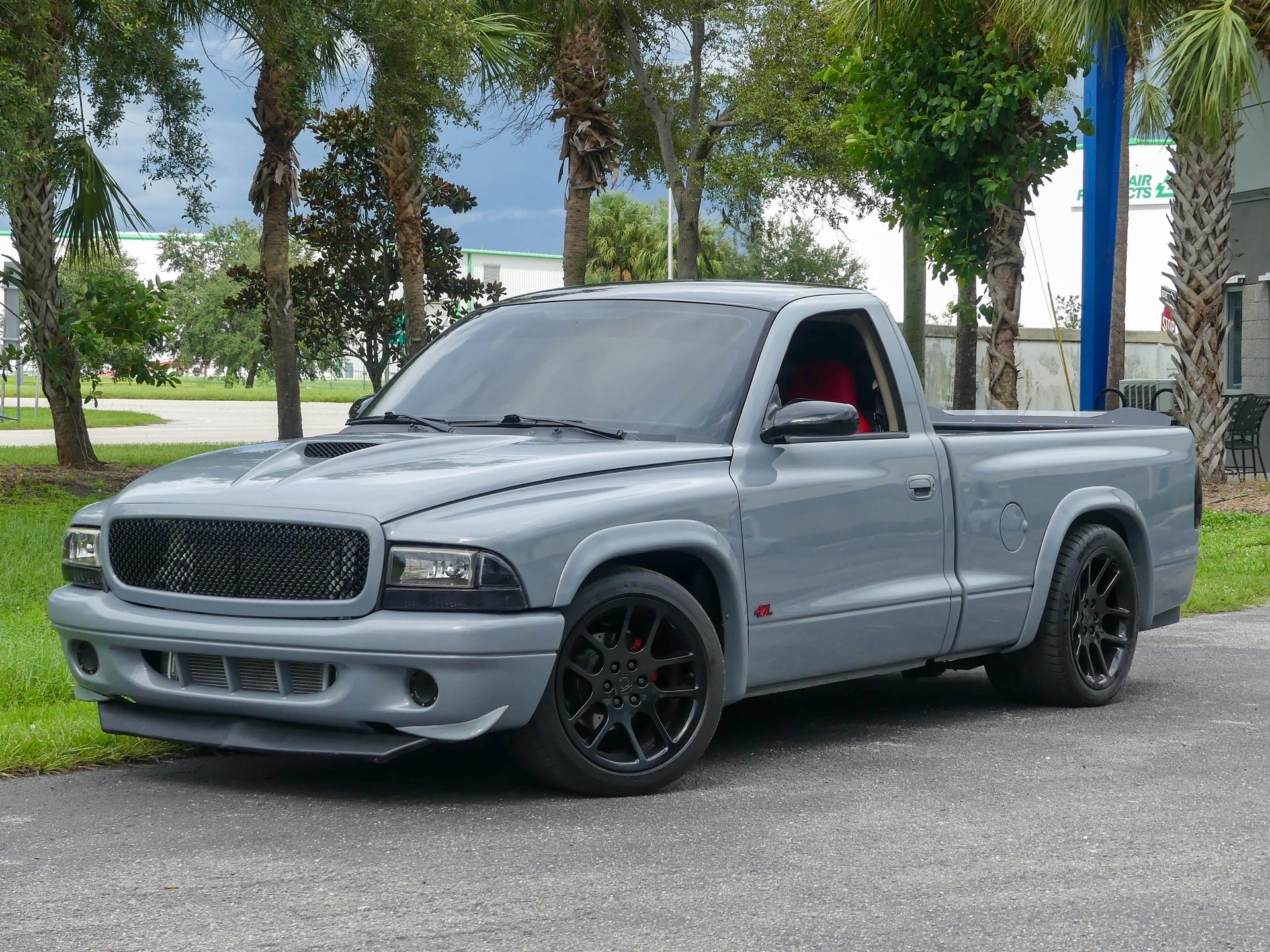
The Dakota looked good on paper and filled a market gap, but its real-world durability fell short. While some trucks did make it past 100K with luck and diligent care, many didn’t.
Between weak powertrain components, poor corrosion resistance, and a host of electrical gremlins, this generation of Dakota remains one of the riskiest choices for long-term ownership.
Unless you’re ready for a full restoration or don’t mind frequent repairs, the early-2000s Dodge Dakota is better remembered than rebought.
2. Chevrolet Colorado (2004–2012, 5-Cylinder Models)
The first-generation Chevrolet Colorado, particularly models equipped with the 3.5L and 3.7L inline-5 engines (dubbed “Vortec” I5s), promised a fresh, modern take on the compact-to-mid-size pickup.
Unfortunately, the execution left much to be desired, especially in terms of reliability. While the idea of a five-cylinder engine in a truck was unique, in practice, it introduced more problems than it solved—and many Colorados from this era struggled to make it to 100,000 miles without significant mechanical failure.
The primary issue lies in the I5 engines themselves. While they delivered acceptable power for a mid-size truck, they were notoriously rough-running, unrefined, and prone to multiple mechanical gremlins.
Common problems included excessive valve seat wear, timing chain tensioner failure, and erratic idling.
Even with regular maintenance, owners frequently experienced engine misfires, oil leaks, and check engine lights—often leading to expensive repair bills that exceeded the truck’s value.
Transmission issues weren’t rare either. The automatic units mated to the I5 often developed harsh shifting and torque converter problems by the 80,000–90,000-mile range.
Some owners reported full transmission failure before hitting the six-figure mark, particularly those who used the truck for towing or off-road duty.
The electronics and interior build quality added to the frustration. Dashboard components frequently cracked, door panels warped, and power window motors failed.
Adding to the list, electrical issues plagued everything from the instrument cluster to the ignition switch, creating a reputation for unreliability that GM struggled to shake during this period.
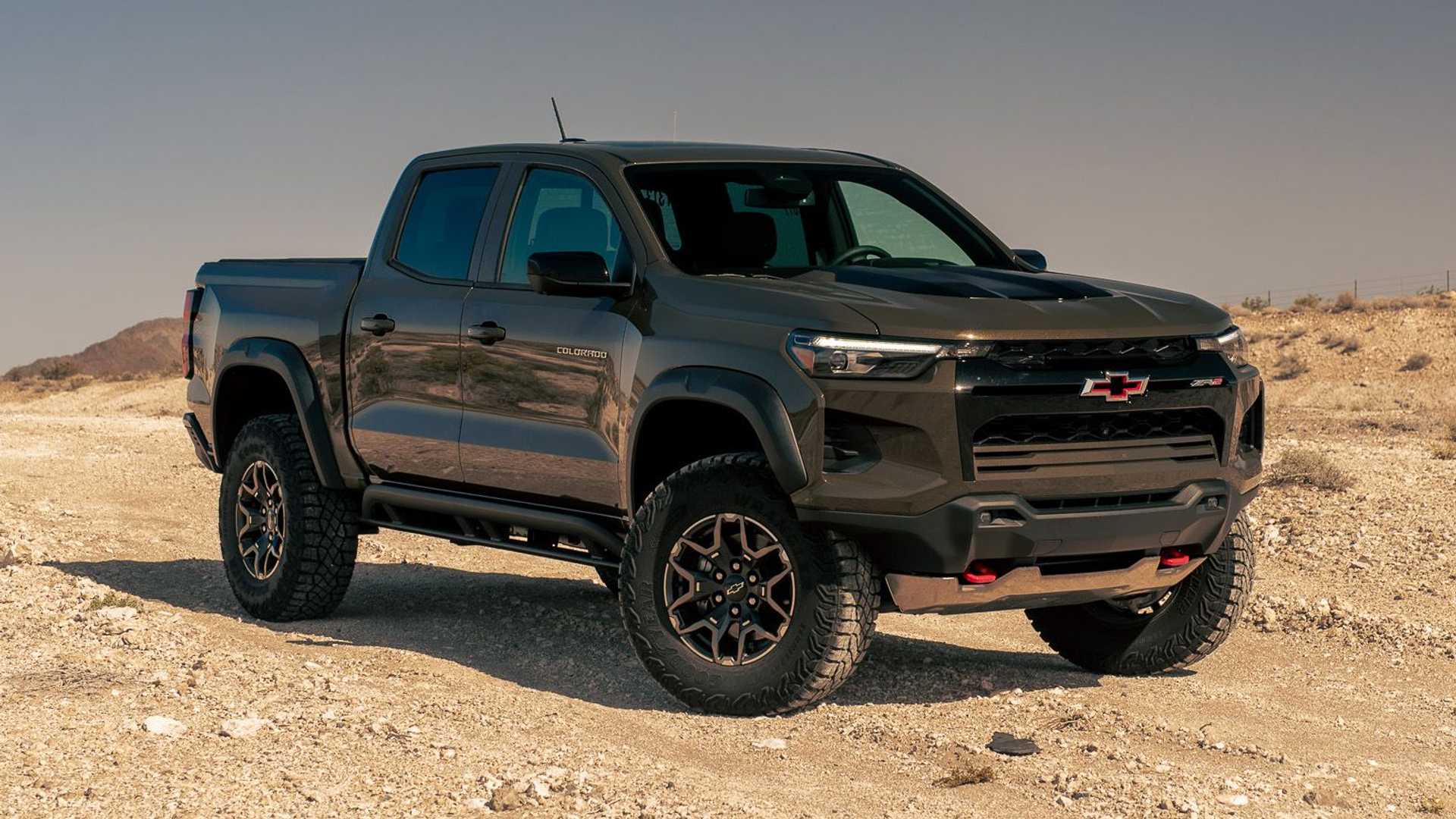
Rust protection was also below average, with rocker panels and cab corners developing corrosion far earlier than expected, especially in snowbelt states.
The result? A pickup that looks appealing from a distance due to its size and practicality—but often turns into a money pit before 100,000 miles.
Despite some loyal fans who appreciated its maneuverability and versatility, the first-gen Colorado became a symbol of GM’s cost-cutting during the early 2000s.
While later Colorados dramatically improved, especially after the 2015 redesign, the 2004–2012 five-cylinder versions remain among the least reliable pickups of the modern era.
If you’re shopping used and planning for longevity, this is one truck you’re better off skipping.
3. Nissan Titan (2004–2006)
The first-generation Nissan Titan arrived in 2004 with high expectations. It was Nissan’s bold entrance into the full-size American truck market, and on paper, it had a lot going for it—a strong 5.6L Endurance V8 engine, aggressive styling, and solid towing numbers.
Unfortunately, early models (especially 2004–2006) quickly developed a reputation for unreliability that haunted the nameplate for years. For many owners, the Titan turned into a maintenance nightmare well before reaching 100,000 miles.
The most common and damaging issue in these early Titans was the rear axle and differential assembly. Failures were widespread and often catastrophic, with seals leaking, bearings burning out, and gear oil draining unexpectedly.
In many cases, the entire rear differential would seize, sometimes locking up the wheels while driving. Nissan was slow to acknowledge the defect, and many owners ended up footing the repair bill—often in the thousands.
The transmission didn’t fare much better. The 5-speed automatic was underbuilt for the torque of the V8 and prone to early failure, especially in trucks used for towing or hauling. Slipping gears, delayed shifts, and total failure before 100K miles weren’t uncommon.
Electrical gremlins were another sore point. Owners reported malfunctioning fuel gauges, inoperative power windows, failing sensors, and even electronic throttle body issues that triggered limp mode. Interior components also wore poorly, with cracking dashboards, faulty seat adjusters, and easily broken plastic trim.
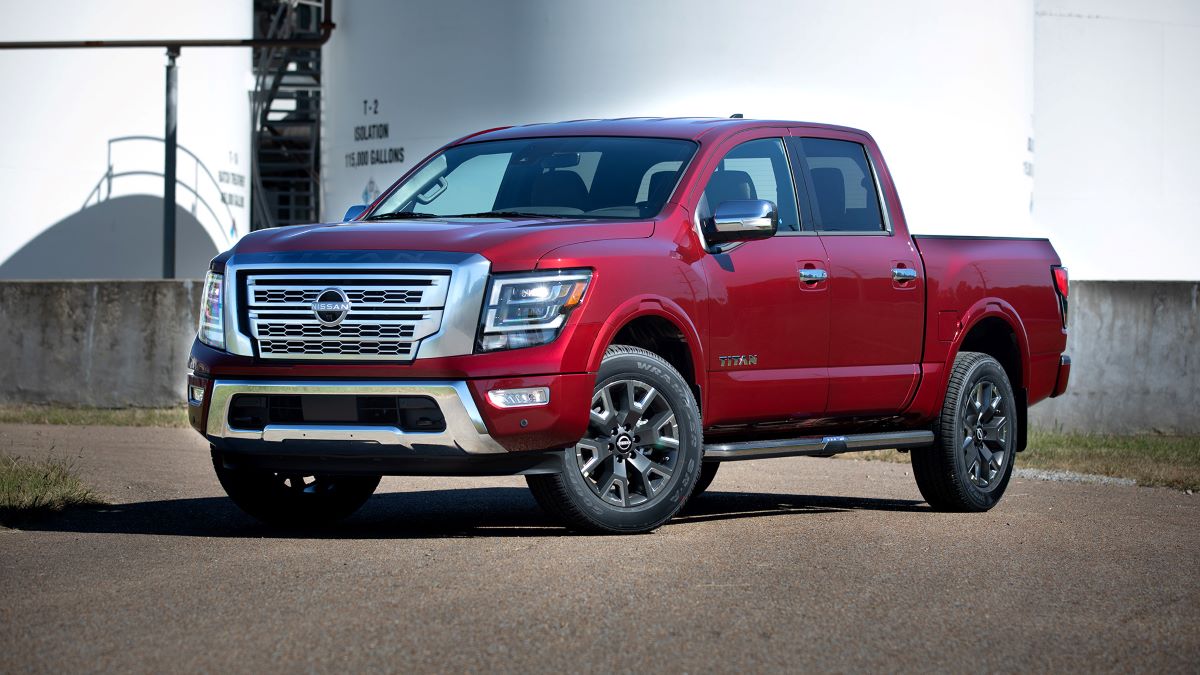
The Titan also suffered from rust issues, particularly around the frame and bed mounts, further shortening its usable life in northern climates. Combined with a rough ride and subpar gas mileage, the ownership experience became disappointing very quickly.
While the 5.6L V8 itself was generally durable, it couldn’t compensate for the raft of problems surrounding it. The truck’s systems simply weren’t built to the standards expected of full-size competitors from Toyota, Ford, or GM.
Many of these early Titans were traded in or scrapped before ever crossing the 100,000-mile line. While later models improved, the damage was done—early Titan reliability issues cemented its reputation as a truck that couldn’t go the distance.
If you’re looking for longevity, the 2004–2006 Titan is a red flag, not a sleeper pick.
4. Ford Explorer Sport Trac (2001–2005, 4.0L SOHC V6)
The Ford Explorer Sport Trac was marketed as a practical blend of SUV comfort and pickup truck utility.
Based on the second-generation Explorer SUV, the 2001–2005 Sport Trac offered a mid-size bed and optional four-wheel drive, making it a tempting choice for families and weekend adventurers alike.
But while it had its niche appeal, long-term reliability—especially in models with the 4.0L SOHC V6—was far from impressive. Many owners found themselves facing major mechanical issues before the odometer reached six digits.
The biggest weak point in these early Sport Trac models was the 4.0-liter SOHC V6 engine. This motor was plagued by chronic timing chain issues.
The design placed one of the chains at the rear of the engine, making it nearly impossible to service without removing the entire engine from the vehicle.
As a result, what should’ve been a routine repair often turned into a multi-thousand-dollar engine-out job. Timing chain rattle, tensioner failure, and eventual catastrophic damage were common by 75,000 to 90,000 miles.
In addition to the engine woes, the 5R55E automatic transmission was no reliability champion either.
Frequent issues included delayed shifting, slipping, solenoid pack failure, and premature wear—especially when the vehicle was used for towing or driven aggressively.
Transmission rebuilds before 100K miles were not uncommon, and many owners simply abandoned their Sport Tracs when the repair costs exceeded the truck’s resale value.
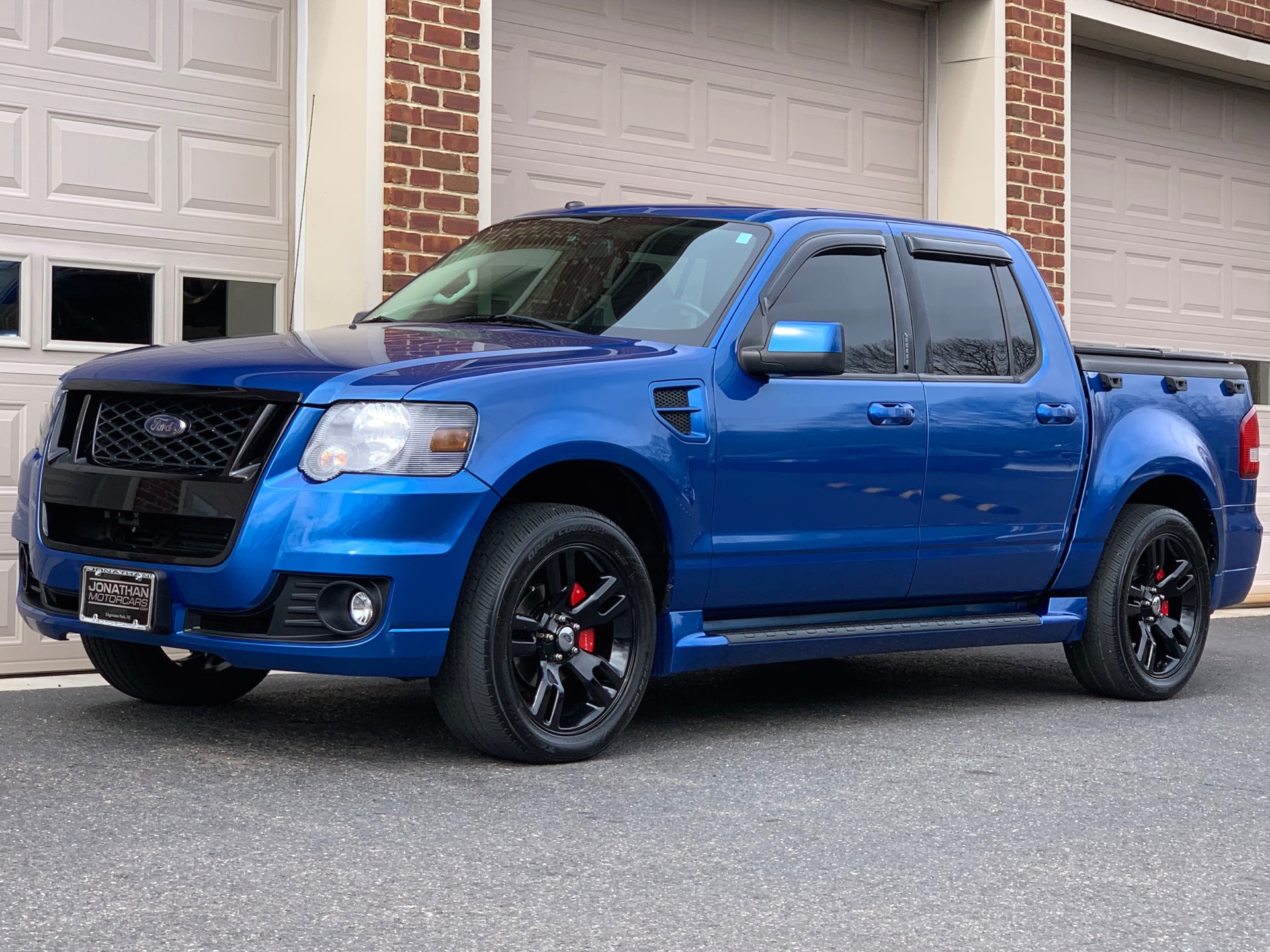
Adding to the list of problems, the early Sport Trac suffered from cheap interior materials, failing window regulators, flaky instrument panels, and corrosion in the rear frame and underbody. Electrical gremlins and drivetrain vibrations were also frequently reported.
Rust could become a serious issue, especially around the rocker panels and rear leaf spring mounts—areas that rarely held up past the 10-year mark in salt-prone climates. Even minor off-roading or winter driving often accelerated corrosion and suspension wear.
Though the Sport Trac offered versatility, its longevity record is among the weakest of any Ford truck-like vehicle from the 2000s. While some examples did make it past 100,000 miles with significant repairs, the majority either failed mechanically or rusted out well before then.
If reliability and long-term ownership are your priorities, the first-gen Sport Trac is a risky investment.
5. Mitsubishi Raider (2006–2009)
The Mitsubishi Raider was a short-lived experiment in badge engineering, essentially a rebadged Dodge Dakota with a few styling tweaks and a Mitsubishi badge slapped on the grille.
Offered from 2006 to 2009, the Raider aimed to give Mitsubishi a piece of the American truck market.
However, what it actually delivered was a forgettable and frequently problematic truck that rarely made it past the 100,000-mile mark without serious issues—if it even made it that far.
Built on the same platform as the problematic Dakota of the time, the Raider inherited many of the same mechanical flaws. The most commonly equipped engine was the 3.7L V6, which proved to be underpowered, inefficient, and prone to early failure.
Timing chain problems, oil consumption, and rough idling were regular complaints. Though a 4.7L V8 was offered on higher trims, it brought its own issues—particularly with overheating, head gasket failures, and weak valve train components.
Transmissions were another trouble spot. The automatic gearboxes were known for poor shift quality, slipping, and early failure, especially when paired with the V8. For a truck marketed with some level of utility in mind, the Raider often failed when actually asked to tow, haul, or endure harsh use.
Build quality was mediocre at best. Interior plastics felt cheap, panels didn’t line up well, and switchgear often broke after a few years.
Cabin electronics, including the radio, power locks, and instrument clusters, were buggy and inconsistent. Even the paint quality was poor, with clear coat peeling common on vehicles only a few years old.
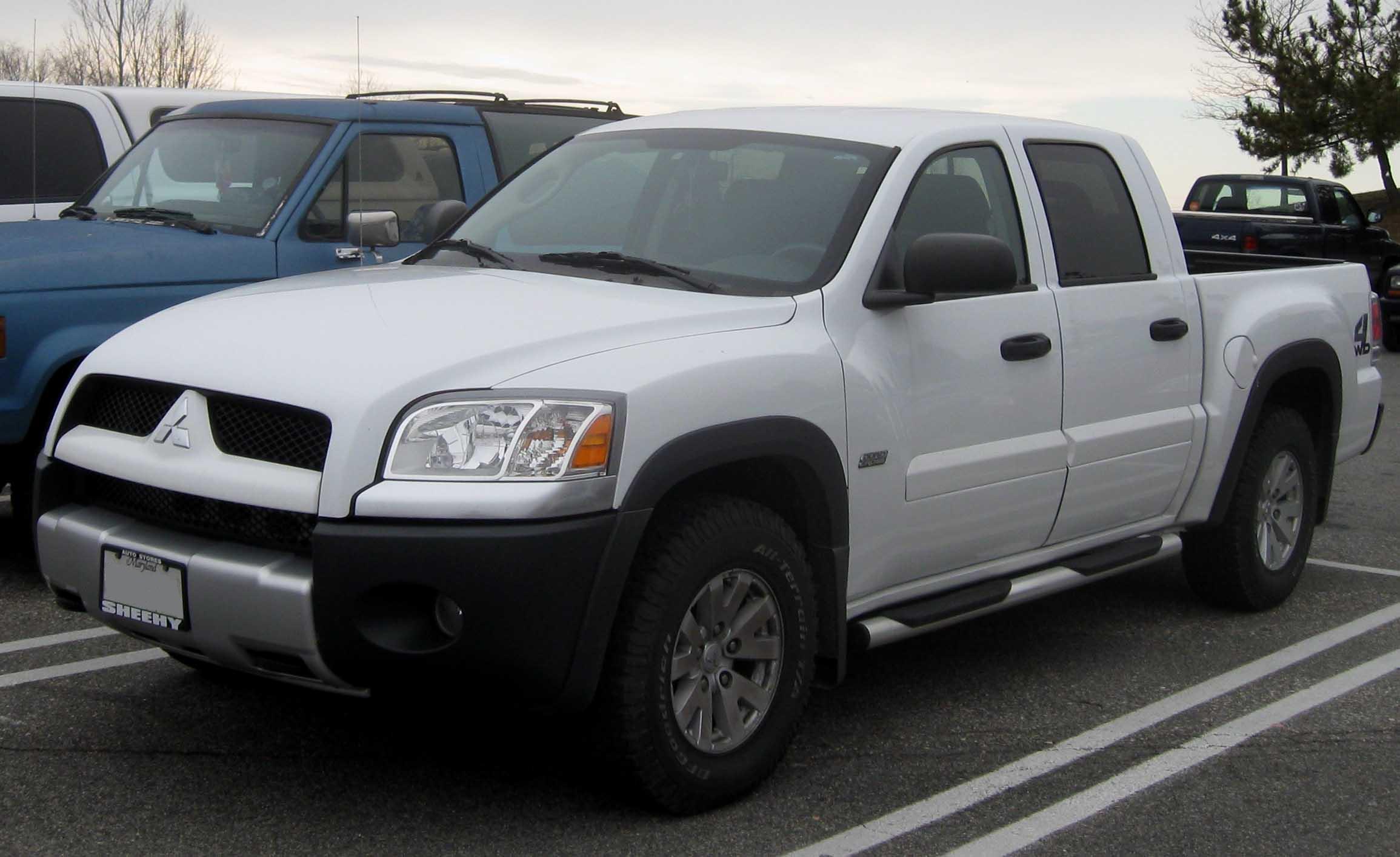
Add to that limited aftermarket support and poor parts availability—since it was neither a true Mitsubishi nor a widely adopted Dodge—and ownership became frustrating. Getting repairs was often expensive and slow due to supply chain gaps.
The Raider also struggled with resale value. With few sold, limited brand trust, and a reputation for unreliability, these trucks depreciated quickly and found their way to scrapyards rather than second owners.
In short, the Mitsubishi Raider was a truck that lacked identity, durability, and long-term value. Most were retired well before 100K miles, making it a cautionary tale for anyone considering obscure badge-engineered pickups.
Pickup trucks occupy a unique place in the automotive world. They’re expected to be workhorses—reliable, durable, and ready for anything.
Yet as we’ve seen, not all pickups live up to that promise. Some, like the Toyota Tundra and Ford Super Duty, go above and beyond, regularly reaching 500,000 miles with grace.
Others, like the early Nissan Titan and Mitsubishi Raider, start to unravel long before hitting 100,000. This contrast underscores a vital truth: appearances and brand reputation don’t always guarantee long-term reliability.
What separates the legendary from the forgettable usually comes down to engineering priorities. Trucks that go the distance tend to use proven powertrains, robust drivetrains, and less-complicated electronics.
They’re often built with serviceability in mind and supported by strong aftermarket communities and readily available parts. Owners of these high-mileage machines understand the value of maintenance—and the vehicles reward them with decade-spanning performance.
On the other hand, the trucks that fizzle out early often share common traits: under-tested engines, cost-cutting design, poor corrosion protection, and unreliable electronics.
In some cases, it’s a matter of bad timing—launching during a brand’s low point in quality control. In others, it’s the result of overpromising and underdelivering, especially in models rushed to market or based on already troubled platforms.
For buyers—especially those looking at used trucks—knowing which models are built to last can make or break your investment.
High mileage shouldn’t be feared when it’s backed by a track record of reliability. Conversely, low mileage doesn’t mean much if the model is known for major problems by 80,000 miles.
Whether you’re after a truck that can survive the apocalypse or simply trying to avoid one that might implode before your next inspection, it pays to look beyond the badge and dig into the data.
In the world of pickups, long-term value isn’t just about torque and towing—it’s about the truck that shows up to work every day, year after year.
Choose wisely, and you could be behind the wheel of a half-million-mile legend. Choose poorly, and you might not make it to six figures at all.
Also Read: 5 Brands With Affordable Long-Term Ownership and 5 That Bankrupt You

